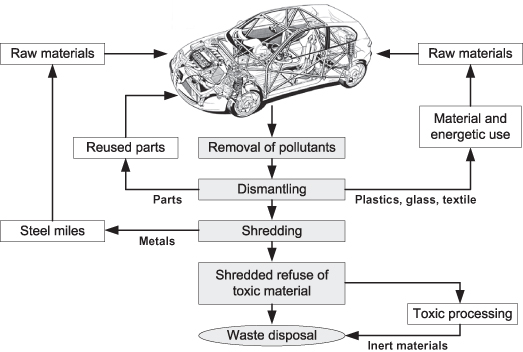3.4 VVT ACTIVITIES DURING DISPOSAL
The purpose of the system Disposal phase is to properly dispose of the system and its elements upon completion of its useful life. During this phase, systems should be dismantled, partially or completely recycled and shredded and, finally, toxic materials must be neutralized. The majority of systems have no formal disposal requirements. However, systems with hazardous materials or other safety issues have specific disposal requirements related to environmental protection, levels of materials recovery and methods of disposal.
Let’s look, for example, at automobile disposal in the European Union (EU). Every year, End-of-Life Vehicles (ELVs) generate between eight and nine million tons of waste in the EU. In 2000, the EU adopted a legislation (ELV Directive 2000/53/EC) that aims at making vehicle dismantling and recycling more environmentally friendly (see Figure 3.7). Among other elements, the directive sets clear quantified targets for reuse, recycling and recovery of vehicles and their components. In addition, the directive requires producers of cars and their components to manufacture new vehicles with a view to their recycle-ability.
Figure 3.7 Typical vehicle disposal cycle mandated in the EU.

VVT activities during the system Disposal phase include developing a VVT plan for system disposal, assessing the planning of the system disposal process, ...
Get Verification, Validation, and Testing of Engineered Systems now with the O’Reilly learning platform.
O’Reilly members experience books, live events, courses curated by job role, and more from O’Reilly and nearly 200 top publishers.

